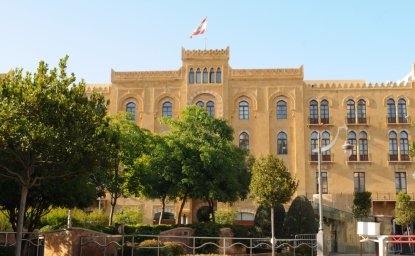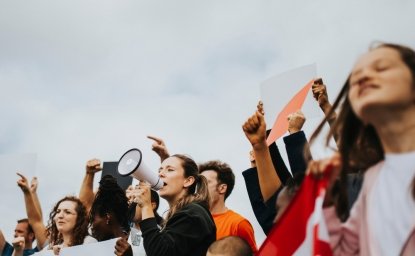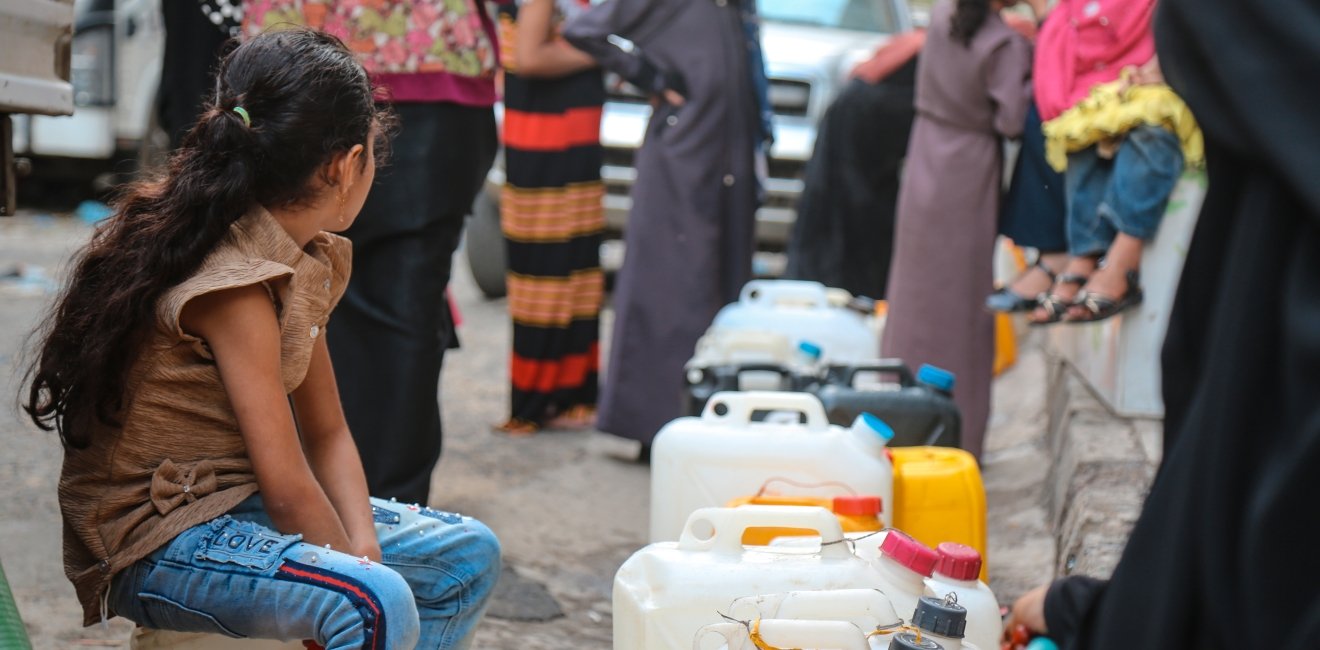
A blog of the Middle East Women's Initiative
The UN estimates that gender-based violence (GBV) has affected 33 percent of women worldwide. In Yemen, GBV has increased by 63 percent since the start of the civil war. As of 2017, roughly 17 percent of women and girls in Yemen were at high risk for GBV. The COVID-19 pandemic has further exacerbated gender-based violence around the world. However in Yemen, lack of access to water and sanitation is a key contributor to GBV as well as a vector for many other diseases. COVID-19’s spread throughout the country underscores not only the importance of water, but also the disproportionate impact of water scarcity on women.
In June, the UN Children’s Fund published a report revealing the severity of the lack of access to water, sanitation, and hygiene assistance in Yemen, stating that 11.2 million of the 20.4 million Yemenis are in dire need. This deficiency stems from numerous factors: the climate crisis, water mismanagement, migration, and attacks on water systems. Since the start of the civil war, the Pacific Institute has logged 128 attacks to water systems in Yemen. The total renewable water resources per capita per year has continued to shrink, falling to 74.3 cubic meters in 2017. Individuals, mostly women, spend more time and effort obtaining water for their families, exposing them to unsafe areas, unsanitary water, and rendering them more vulnerable to GBV.
COVID-19 has increased the necessity for acquiring safe water so families can frequently wash their hands. The pandemic, which reached Yemen in April, also saw an increase in both water and food prices. The increase in water prices also forces women and children to travel longer distances to obtain water from collection points instead, further increasing their vulnerability.
The increase in travel time due to the destruction of water infrastructure and rising water prices exposes women to the threat of GBV for longer periods.
Participants in a Sana’a Center for Strategic Studies report from 2019 stated that “the incidence of multiple forms of physical and sexual violence had increased during the conflict in the home and in public spaces.” Participants attributed this increase in part to decreased state capacity to punish perpetrators, but also lack of intervention from bystanders for fear of individuals carrying weapons. This has left women afraid of traveling alone to collect water, most drastically affecting individuals in rural areas where women spend two to four hours a day collecting water. The increase in travel time due to the destruction of water infrastructure and rising water prices exposes women to the threat of GBV for longer periods. Obtaining water from public taps not only presents a risk for sexual harassment, but the lack of private areas for women at water collection spots encourages risky unhygienic practices.
Additionally, the International Committee of the Red Cross reports that recent flooding in Yemen has decreased road accessibility, polluted reservoirs, and increased the number of internally displaced people. IDP camps in Yemen represent both a large risk for the spread of COVID-19 and GBV. Participants in the Sana’a Center for Strategic Studies report identified that displaced women are especially vulnerable in camps due to unisex bathrooms. Additionally, water contamination from flooding will exacerbate the spread of Cholera, which has already disproportionately affected women due to their role in care-giving, cleaning bathrooms, and collecting unclean water.
The food crisis not only increases the sole pressure on women and children to obtain adequate amounts of water from far away water collection points, but also hurts women as they often are the last to get food in times of shortage.
The Norwegian Refugee Council survey of families in Yemen found that since April half of the respondents had lost at least half of their income, while 25 percent of vulnerable families reported losing their entire income. These families stated that obtaining adequate amounts of food was their top priority. However, though food is certainly a grave concern for families in Yemen, with 10 million on the brink of famine, the International Rescue Committee reports that the water shortage issue “is compounded by the fact that men, who are the ones responsible for making financial decisions, do not prioritize water purchases, even when this is an option.” The report notes that the reason, according to women interviewed, “is because men are less acutely aware of families’ consumption needs and are less affected by water shortages.” The food crisis not only increases the sole pressure on women and children to obtain adequate amounts of water from far away water collection points, but also hurts women as they often are the last to get food in times of shortage.
Though COVID-19 and economic collapse have already disproportionately affected women in Yemen, it also presents an opportunity. Yemeni women historically have educated and protected against the spread of disease, and they have continued to do so since the start of COVID-19 by sewing masks to protect individuals in their communities. Additionally, women have the most experience in dealing with the failures of the water system and water shortages. Thus, though the situation seems grim, women are an extremely valuable asset for improving the situation in Yemen and are essential for shaping a healthier, more peaceful future.
Author


Middle East Program
The Wilson Center’s Middle East Program serves as a crucial resource for the policymaking community and beyond, providing analyses and research that helps inform US foreign policymaking, stimulates public debate, and expands knowledge about issues in the wider Middle East and North Africa (MENA) region. Read more


Middle East Women's Initiative
The Middle East Women's Initiative (MEWI) promotes the empowerment of women in the region through an open and inclusive dialogue with women leaders from the Middle East and continuous research. Read more

Explore More in Enheduanna
Browse Enheduanna
Women are the Catalysts for Change in Lebanon

How Education Can Empower Young Women in MENA


